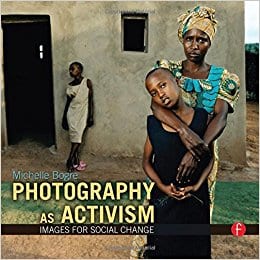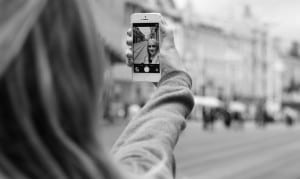 The text Pandora’s Camera; Photography after Photography portrays a strong view and exploration of typical digital retouching and also explores examples of artists that challenged the view of what is glamour in an alternative perception of public figures.
The text Pandora’s Camera; Photography after Photography portrays a strong view and exploration of typical digital retouching and also explores examples of artists that challenged the view of what is glamour in an alternative perception of public figures.
Joan Fontcuberta begins to discuss an advert by company Chanel and how when it came to using actress Keira Knightley in celebrity endorsement for their perfume, the actress was expected to go for a more sensual ‘feminine’ shape, instantly shaming her slim figure and lack sizing in her breasts. Company Touchstone pictures picked upon the same body discrediting and enhanced the actress’s breasts in photoshop.
This exploration into the two companies that discouraged Keira’s body lead to quotes discussing deception and the truth. “Truth should be shown not naked, but in a nightgown” Francisco de Quevedo. My interpretation of this statement suggests that the truth should be shown, it shouldn’t have to be exposed so boldly, but also shouldn’t be covered up. This was followed by a statement by Thomas Fuller “Craft must have clothes, but truth loves to go naked” Meaning to lie, states you’re covering up the truth, but ‘Truth loves to go naked’ expresses honesty is freedom when you’re not having to hide anything. When Joan discusses the Chanel advert in relation to the quotes, he talks about digital retouching mitigating Kiera’s chest and how digital surgery like this is not an exclusive privilege to women, then refers to enhancements used on Sylvester Stallone.
Throughout the text, Joan continues to talk about how digital retouching is standard, it goes without saying that there isn’t a digital media company that wouldn’t consider it, continuing this on by mentioning that within digital technology, “if it’s possible…sooner or later it’s going to happen” Meaning if you can enhance images and fake it to make it… why not? He carries this on with a discussion on celebrities caught in the nude… then states “it’s unlikely that many people believe these photos are authentic” introducing artist Alison Jackson who uses Photoshop to create photo fiction of public figures for humor, with an example of using George W. Bush in an image of him baffled by a Rubiks cube. Joan discusses that these types of pictures by Alison Jackson don’t deceive anyone, she just creates fantasies. “Their condition as fiction is a product of our perception”. Joan means the photo fiction of celebs is merely a result of how the public have been made to see them.
Later in the text, Joan speaks about how we don’t need to worry about how we look anymore because we’re in a society where we’re more focused on the image rather than what is real. But then later discusses how no matter how much you fake something, it won’t change what’s reality in relation to the perfume advert with Keira Knightley… “The retouched Keira maybe more fascinating, but the extra attractiveness makes no difference to the smell of the scent”
The text also divides blame between who’s at fault when it comes to media manipulation, is it the photographers or the editors? Joan includes a quote “Don’t blame the bullets, blame the speed at which they hit people” Suggesting that photography is the bullet and photoshop is the speed that hits the people with such force. But within the quote lies “Though everyone knows that bullets are designed specifically to travel at that velocity” meaning it’s the photography that is designed to hit people at such a speed, the photoshop is merely a curve ball on the way.
Joan concludes the text with a discussion on hypocrisy of editors and how they wave codes of ethic when the images are done by the photographers, if any criticism comes from enhancing too much but when it comes to gaining corporate interest, editors are more than happy to permit and justify the work.


 The text Pandora’s Camera; Photography after Photography portrays a strong view and exploration of typical digital retouching and also explores examples of artists that challenged the view of what is glamour in an alternative perception of public figures.
The text Pandora’s Camera; Photography after Photography portrays a strong view and exploration of typical digital retouching and also explores examples of artists that challenged the view of what is glamour in an alternative perception of public figures.